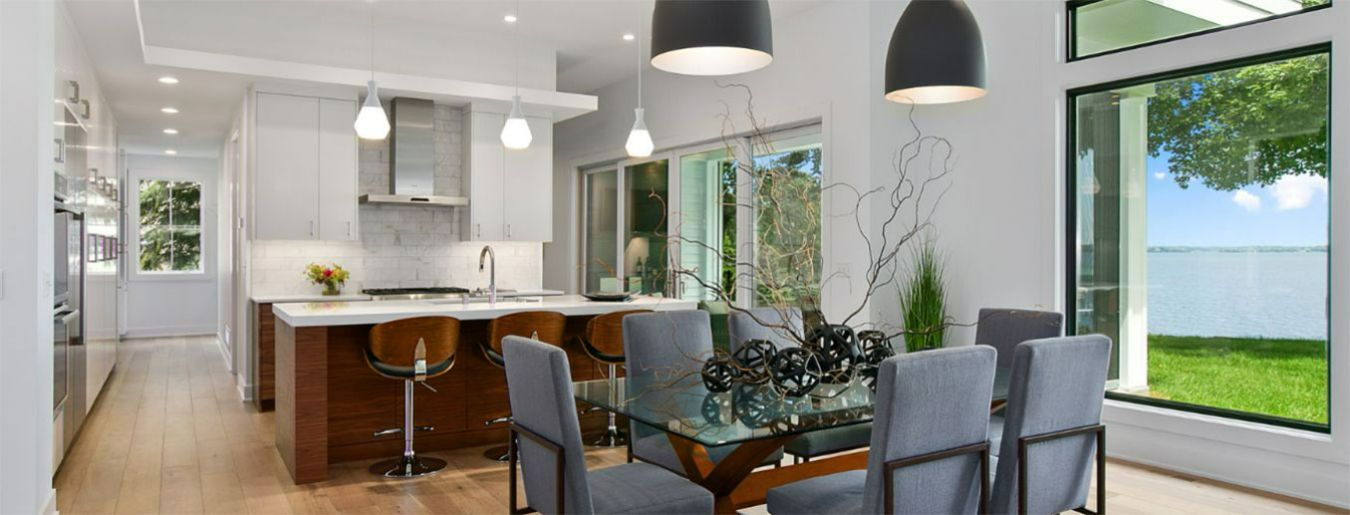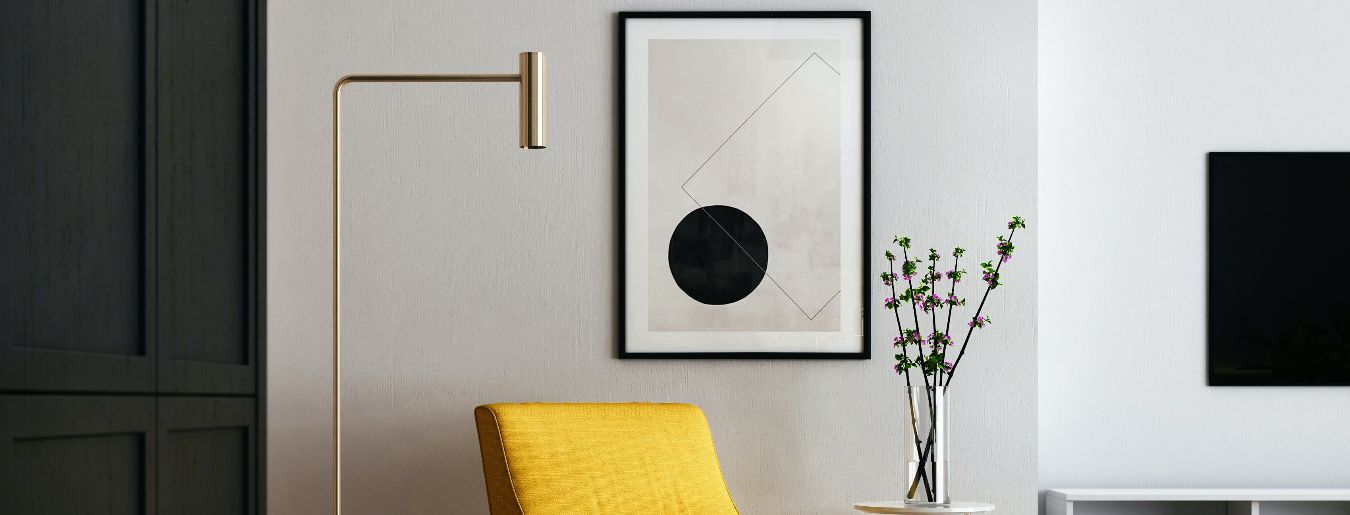House lighting design may be the most underrated element of home décor. We tend to focus much more on furniture, paint colors, wallpaper, flooring, cabinets, appliances, artwork, and so on. When we do address lighting, we pay attention to the designs of the fixtures themselves.
All of those design elements are important, but the quality of your home décor lighting—the brightness, temperature, color, and mix of lighting types—can markedly transform the look and feel of your home.
Ultimately, you want your lighting to be practical, controllable, and efficient. This guide will review some home lighting ideas that you can implement in your home.

Get Home Warranty Quotes
from Top Rated Authorized
Partners
Get a Quote
Components of Indoor Lighting Design
Interior lighting design can be broken into several categories. Here are some categories of lighting types to consider.
1. General Lighting
General lighting or ambient lighting is your home’s main artificial light source. Recessed lighting, track lighting, floor lamps, and overhead light fixtures can all fall into this category. Ambient lighting isn’t usually meant for specific tasks. Rather, it illuminates a home for general purposes.
2. Task Lighting
Task lighting has a more targeted purpose. Reading lamps and desk lamps are common examples, though some built-in lights can function as task lighting too. Recessed lights over the kitchen sink or stovetop, for example, provide abundant illumination while cooking and cleaning.
3. Accent Lighting
Accent lighting is a kind of decorative lighting that serves to highlight some aspect of the home. Accent lights include lights within a cabinet, bookshelf, hutch, or display case. They may illuminate artwork, decorative pieces, architectural features, or other interesting elements of the home.
4. Mood Lighting
Mood lighting contributes to the ambiance of a room. Candles, votives, string lights, and small lamps can all work toward this end. Mood lighting is typically too dim to serve a more functional or practical purpose.
5. Natural Lighting
The sun’s natural light is a significant contributor to your home’s lighting scheme. Window treatments—blinds, shades, curtains, and so on—can help you control the amount of natural light in your home. You can also brighten up a room with natural lighting by hanging mirrors and choosing light paint colors.
How to Use Lighting in Your Home
A mix of lighting types is ideal for most rooms in your home. Below are some room-specific lighting ideas to consider.
1. Living Areas
Living and family rooms typically do well with ambient lighting that homeowners can control. This could mean multiple switches to control separate overhead lights or zones. Dimmable switches or controllable smart lights are also worthwhile, as these will allow you to dim the lights while watching television.
Task lighting in your living areas should be dictated by your family’s everyday activities. If you’re a reader, stand a tall reading lamp or table lamp beside your couch or recliner. Control natural lighting in your living areas by installing semi-opaque blinds or darkening treatments on your windows. This will help to minimize glare on your television.
Accent lighting is dependent on the décor of your living room or family room. Bias lighting can tastefully illuminate wall-mounted prints, and bookshelf lighting makes for a timeless look. Use votives or candles on a coffee table to foster a soothing ambiance.
2. Dining Rooms
The main source of light in your dining room is likely overhead light fixtures above the table. This lighting should not be glaringly bright. Dimmable switches or controllable smart light bulbs are ideal. When it comes to light quality, opt for warmer hues instead bright blue or white light.
Lighter curtains may be appropriate for a dining room, given that you may use the formal setting most often at dinnertime, when the sun is low in the sky or has already set. Dim accent lighting in a china cabinet or hutch is a nice touch. For a more elegant feel, set scentless candles on the dining table or buffet table.
3. Kitchens
Task lighting is critical in your kitchen. Focused and reasonably bright light above the stove, countertops, and sink is necessary to safely and efficiently cook and clean. You can achieve this with hanging pendant lights, directional ceiling-mounted lights, and lighting mounted beneath built-in microwaves and cabinets.
Lighting under cabinets can also function as accent lighting. If you have glass-paneled cabinets, consider interior lights that can illuminate plates and cookware.
4. Bedrooms
You want total control over your bedroom lighting. Sometimes strong lighting is appropriate for dressing, applying makeup, and cleaning. Sometimes softer lighting is appropriate for reading or watching television. Of course, the total absence of light is important for quality sleep.
Recessed ceiling lighting with multiple dimmable switches can provide the ideal ambient lighting. If you require a lot of light on a dark winter morning, you can illuminate all zones. If you want to keep things dimmer for a relaxing evening, you can do that too.
Bedside reading lamps or a bar light over your headboard make for effective task lighting for reading in bed. String lights or controllable LEDs are good choices for mood lighting, depending on your home’s aesthetic.
5. Bathrooms
Consider bright task lighting for bathroom counters. Twin wall-mounted sconces can support makeup application, shaving, and other forms of grooming. In addition to general ambient lighting, you may want to install a dimmer light above your shower on a separate switch.




 Prev Post
Prev Post



